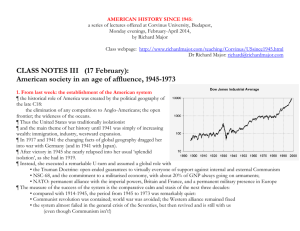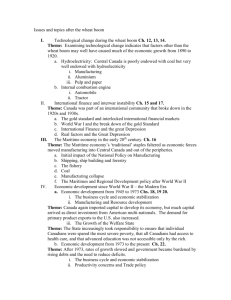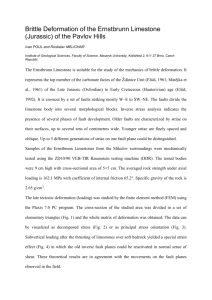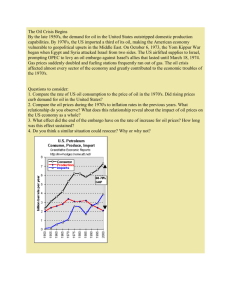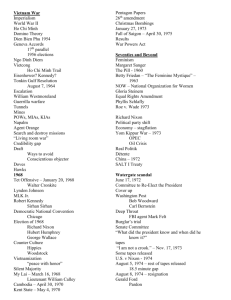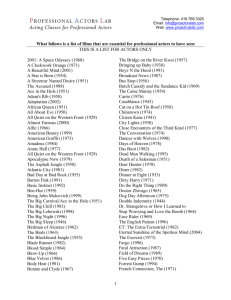Module #8: MODERN ERA
advertisement
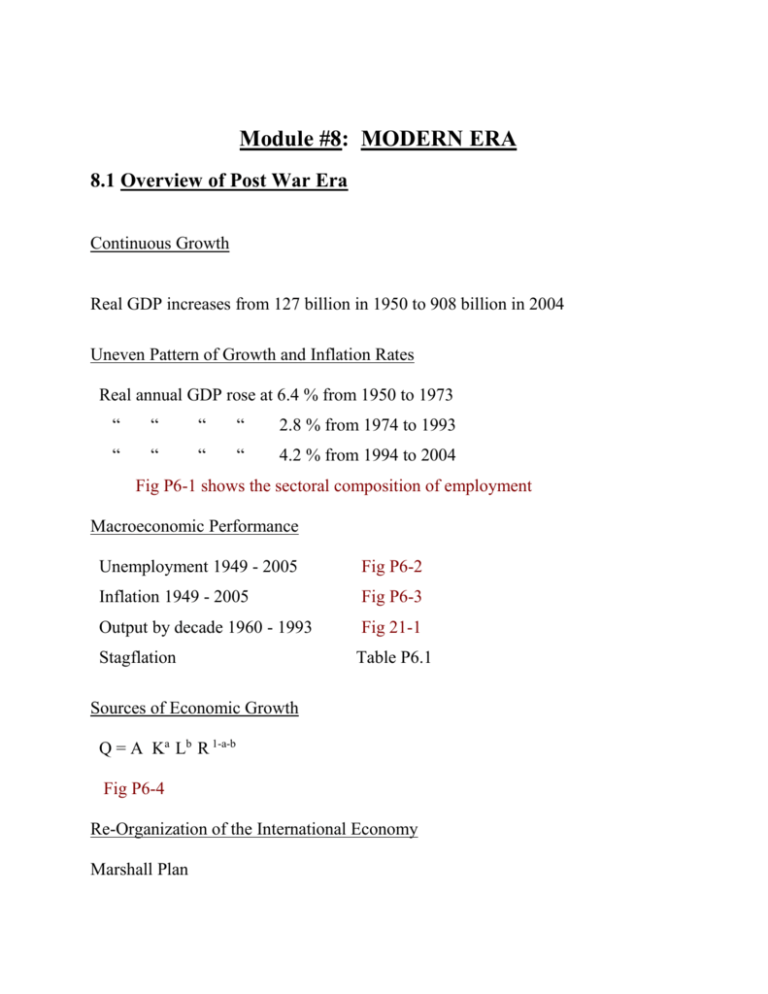
Module #8: MODERN ERA 8.1 Overview of Post War Era Continuous Growth Real GDP increases from 127 billion in 1950 to 908 billion in 2004 Uneven Pattern of Growth and Inflation Rates Real annual GDP rose at 6.4 % from 1950 to 1973 “ “ “ “ 2.8 % from 1974 to 1993 “ “ “ “ 4.2 % from 1994 to 2004 Fig P6-1 shows the sectoral composition of employment Macroeconomic Performance Unemployment 1949 - 2005 Fig P6-2 Inflation 1949 - 2005 Fig P6-3 Output by decade 1960 - 1993 Fig 21-1 Stagflation Table P6.1 Sources of Economic Growth Q = A Ka Lb R 1-a-b Fig P6-4 Re-Organization of the International Economy Marshall Plan Organization for European Economic Co-Operation (later OECD) European Payments Union Common Coal and Steel Market European Economic Community created with the Treaty of Rome in 1958 Bretton Woods (1944) IMF to police Bretton Woods and provide temporary loans to members which grew from 44 in 1947 to 107 in 1967 GATT founded in 1947 set a code of conduct for members to following in international trade and a forum to reduce tariff rates 8.2 Era of Sustained Growth and Prosperity, 1946 - 1973 Overview 1946 - 73 Figure 19-1 shows the Annual Increases in Real GDP from 1947 to 1973 The sustained growth was supported by I) External Factors - liberalization of trade - rapid growth in the U.S. and Europe - inflows of foreign investment and labour II) Internal Factors - growing population - rising labour force participation - new infrastructure - education and training - reallocation of resource inputs to growth sectors - discovery and development of new natural resources Conversion from a ‘Hot’ War to a ‘Cold’ War Economy, 1945 – 50 - cut back in military expenditures was slower than World War I - federal government undertake major projects such as the trans-Canada highway - provided export credits to European economies undergoing reconstruction - commitment to post-war Keynesian planning preventing shortages and consistent increase in pent-up consumer demand. - Discovery of major petroleum reserves in Alberta in 1947 Stabilization Policies Fiscal – taxes reduce in each year from 1945 to 1949 Exchange Rate Policy – initial commitment to Bretton Woods system 1946 – fixed exchange rate raised to parity with U.S. dollar 1949 – devaluation of 10% 1950 – adopted flexible exchange rate The Korean War and a Resource Boom, 1951- 56 - military conflict began in 1950 and ended in 1953 - government expenditures rose 30% in 1951 and 23% in 1952 - rapid expansion of mineral resource industries throughout the 1950s closed the net import gap in this sector of the economy Stabilization Policy Monetary policy - becomes more counter-cyclical - establishment of a money market in Canada Exchange Rate Policy – floating Canadian dollar served as an effective antiinflationary device. Slower Growth in the Short-term, 1957 - 1961 Diefenbaker elected in 1957 trumpeting a ‘northern vision’ Established the National Energy Board in 1959 National Oil Policy introduced in 1961 Stabilization Policy Read page 379 on your own The Sustained Economic Boom from 1962 to 1973 The Annual Real GDP growth from 1957 - 1961 was 2.9% The ‘ ‘ ‘ ‘ ‘ 1962 - 1973 was 5.2% to 7% All components of aggregate demand increased as the capacity of the economy increased at or near full-employment All resource sectors expanded : agriculture, minerals, forestry, fisheries Auto Pact signed in 1965 created free trade for the American car companies Stabilization Policy Read page 381 - 83 on your own 8.3 Second National Policy, 1930 – 1985 Recall Fowke’s description of the First National Policy (1825-1930) V. C. Fowke; ‘The National Policy: Old and New’ (CJEPS, 1952) I) Second National Policy, 1930 - 50 The hypothesis which will be advanced here is that after 1930 the federal government worked gropingly and against substantial constitutional difficulties toward the formulation of a new set of national policies to replace the old which had been accomplished. It is argued that the main outlines of this new collective policy can be observed with reasonable clarity in two or three areas of activity: the broad field of public welfare; agricultural policy; and possibly monetary management. Within the limited space of this paper, attention will be centred on the first, that of public welfare. Source: Page 247-48 -thrust of federal government initiatives I) Public Welfare A) old age pension act (1927) Canada/Quebec pension plan (mid 1960's) B) Unemployment insurance - first proposed in 1922 but required constitutional amendment in 1937 C) Grants in Aid - large transfer payments to the provinces starting in the 1930's D) Family Allowance (1944) II) Monetary Management - world lost faith in the old gold standard - established the Bank of Canada in 1925 III) Agricultural Policy - shift emphasis from growth and prairie settlement to stabilization and support as its relative importance falls - federal focus on price supports, crop failure insurance, low interest loans etc. III) Second National Policy, 1946 – 1973 Overview of Chapter #20 in the Textbook - the supply response was market-driven and public policies facilitate the increase in productive capacity through : immigration policies foreign investment policies to improved efficiency in commercial & transportation social investments in health and education - long-term commitment to improve equity via : income security equalization regional development Figure 20.1 shows the domestic savings – investment trend from 1860 to 1990 Figure 20.2 shows the distribution of the Population by Age Group in 1941, 1961 & 1981 Figure 20.6 shows the participation rates for male,s females and youth from 1966 to 1982 Figure 20.4 shows immigration from 1860 to 2000 Change in Federal - Provincial Fiscal Arrangements - several intermediate steps to decentralized tax collection and sharing in first 15 years after the War. - major reforms in 1962 whereby - Ottawa lowered its own rates - each province had to pass legislation setting own tax rates - Ottawa collected taxes for free is provincial rates were a percent of federal rates but Ontario agreed for personal income taxes and introduced its own corporate income tax system while Quebec opted out Social Policies Promoting Equity I) Family allowance payments in 1944 II) Veteran’s Rehabilitation Act in 1945 III) Federal Green Book proposals for sweeping reform with a comprehensive national social policy was abandoned IV) Equalization payments V) Saskatchewan lead health reform with its Hospital Services Plan in 1947 and its comprehensive health insurance scheme in 1961. VI) Federal government passed Medical Care Act in 1966 and came into effect in 1968 as a shared cost program VII) Old Age Security Act of 1951 gave sole jurisdiction of pensions to the federal government. The guaranteed income supplement was added in 1967 VIII) Canada and Quebec Pension Plans Regional Development and Policy Figure 20.7 shows the per capita GDP for each province in 1973 - income supports for agriculture and assistance to rural development - Department of Regional Economic Expansion III) Second National Policy, 1973 - 1986
